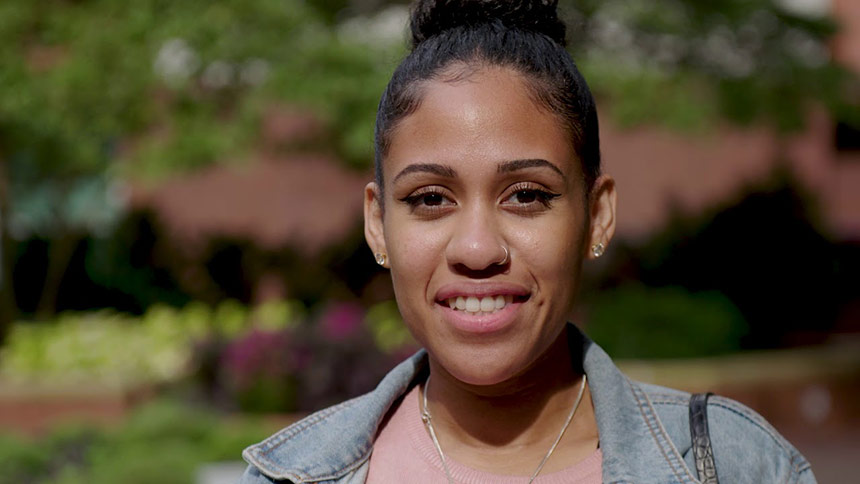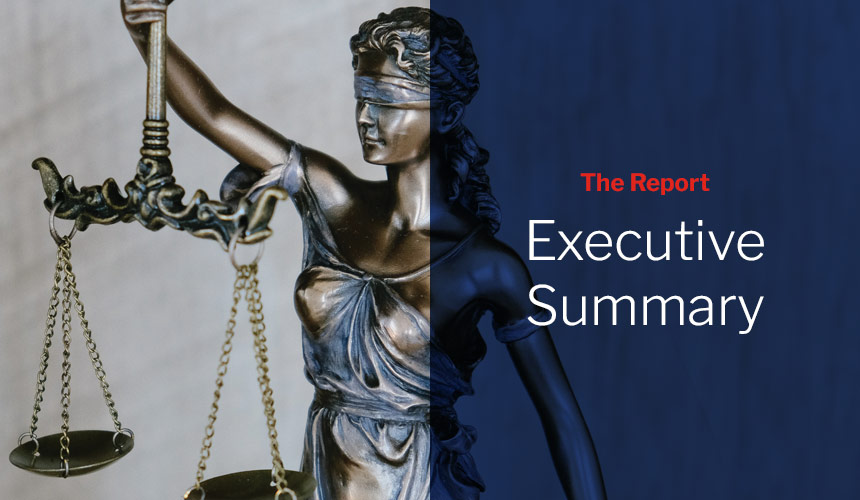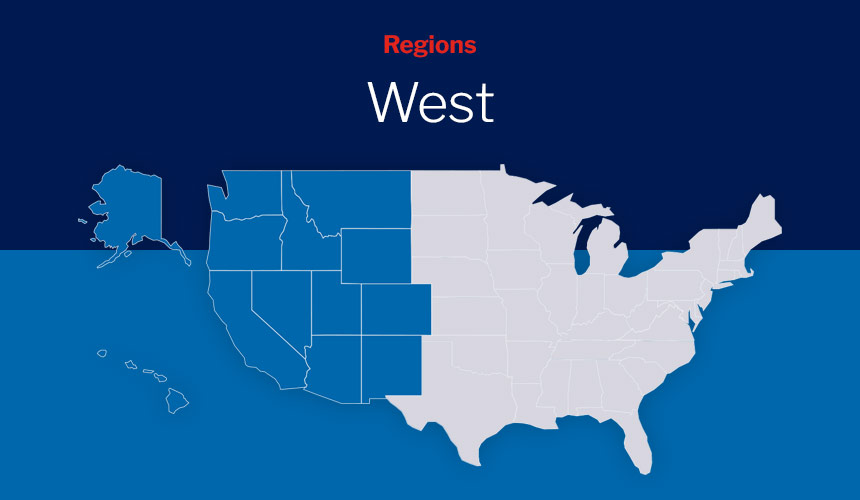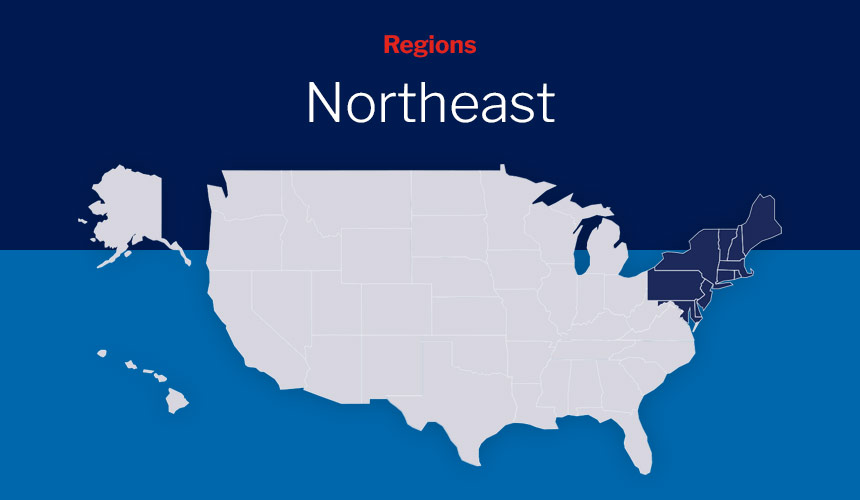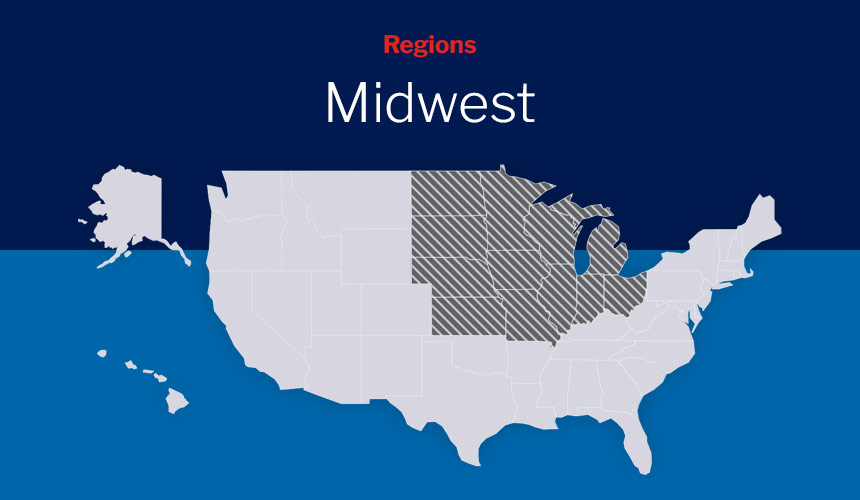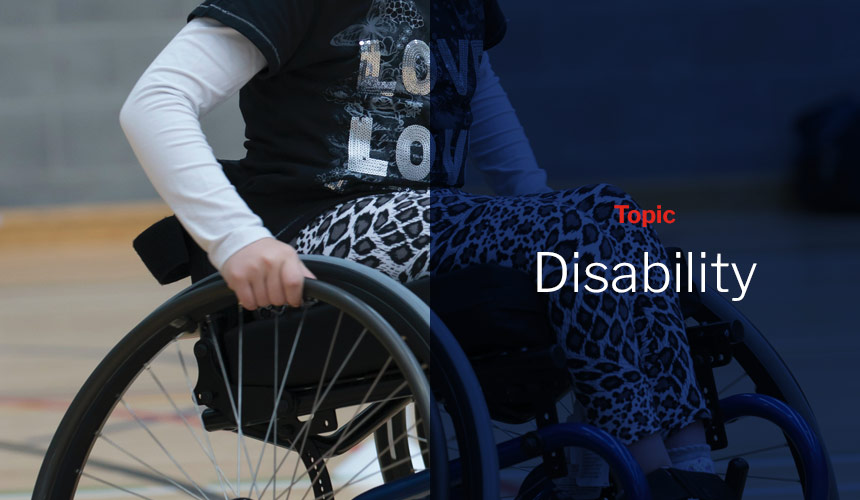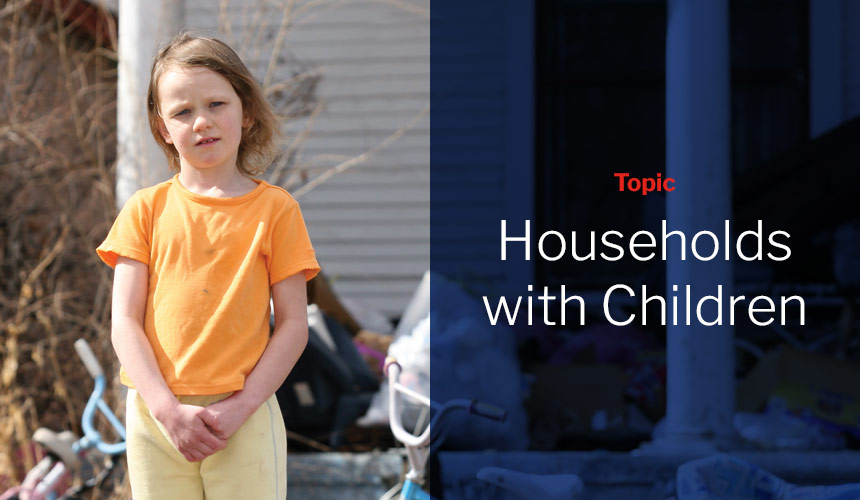Cynthia’s financial troubles began when work reduced her hours at the beginning of the pandemic. After a car accident, she faced eviction. Atlanta Legal Aid Society provided her much-needed legal help.
Unfortunately, most low-income Americans are unable to access all the legal help they needed for their pandemic-related civil legal problems.
Low-income Americans did not receive any or enough legal help for 92% of their civil legal problems related to the COVID-19 pandemic in the past year.
The 2021 Justice Gap Measurement Survey showed that 33% of low-income Americans personally experienced at least one civil legal problem related to the COVID-19 pandemic in the past year. The types of problems most commonly attributed to the pandemic were income maintenance, education, and housing. Low-income Americans sought legal help for 22% of problems related to the pandemic that substantially affected them.
Scroll down for the study’s key findings related to the COVID-19 pandemic.
The Pandemic in Low-income America
The COVID-19 pandemic has had devastating and disproportionate effects on low-income Americans.
In addition to the direct health impacts of the COVID-19 virus on low-income families and communities, 16 the pandemic has also had unprecedented consequences for their economic situations, housing security, mental health, physical safety, food security, access to education, and many other aspects of their lives 17
To provide a sense of some of the challenges low-income Americans still face a full two years into the pandemic, we share some results from the U.S. Census Bureau Household Pulse Survey’s most recent week of data collection at the time of writing this report (Week 43: March 2 – 14, 2022). 18 The statistics below correspond to people with annual household incomes less than $25,000
The Prevalence of Civil Legal Problems
One-third (33%) of all low-income Americans personally experienced at least one civil legal problem related to the COVID-19 pandemic in the past year.
This translates to nearly one-half (47%) of all the low-income Americans who experienced one or more problems overall. Those most likely to experience a COVID-related problem track with our common understanding of who has been most affected by the pandemic. Among those that experienced at least one problem in the past year, those most likely to attribute their problems to the pandemic come from the following types of households: household in which someone struggles with substance use disorder (SUD) (64% attribute at least one of their problems to the pandemic), single-parent households (57%), households with children <12 years old (57%), and renter households (51%). See Figure 3F.
Figure 1. Percent of low-income Americans attributing recent civil legal problems to the pandemic, by household characteristics30
![]()
47%
All individuals
(n = 1,466)
![]()
64%
From households with SUD
(n = 187)*
![]()
57%
From single-parent households
(n = 416)
![]()
57%
From households with children <12 yrs
(n = 552)
![]()
51%
From renter households
(n = 919)
Percent of low-income individuals who personally experienced at least one problem in a given category
* Small base size
The types of problems people are most likely to blame on the pandemic also track with our common understanding of how the pandemic has affected people. For example, respondents attribute nearly one-third (32%) of all their income maintenance problems to the pandemic, 31% of their education problems, and 27% of their housing problems. Looking at specific problems, more than one-half of low-income Americans attribute their problems related to unemployment benefits (52%) and eviction (56%) to the pandemic.
Seeking and Receiving Legal Help
Low-income Americans did not receive any or enough legal help for 91% of the pandemic-related civil legal problems that substantially impacted their lives.
Low-income Americans sought legal help for 22% of the substantial problems that they attribute to the COVID-19 pandemic in the past year.51 Consistent with broader findings, two common reasons cited for not seeking legal help for these problems were concerns about cost and the belief that lawyers could not help with these problems.52
All in all, low-income Americans did not receive any legal help or enough legal help for 91% of the pandemic-related problems that impacted them substantially. Figure 4H below presents estimates for the survey-based justice gap measure for the three types of problems most frequently attributed to the pandemic (i.e., income maintenance, education, and housing).
Figure 2. Percent of substantial, pandemic-related problems for which low-income Americans did not receive any or enough legal help in the past year (i.e., survey-based justice gap measure)53
Percent of pandemic-related problems experienced with substantial impact
*Small base size
Comparing Income Groups
Income disparities in the justice gap are exacerbated for civil legal problems related to the COVID-19 pandemic.
Compared to low-income Americans, those with higher incomes are less likely to have experienced a civil legal problem related to the COVID-19 pandemic. While one-third (33%) of low-income Americans experienced at least one problem related to
the pandemic, this is true for only 18% of those at or above 400% of FPL.65
Table 5C presents the survey-based measures of the justice gap for all problems with substantial impact – breaking them out by whether they were related to the pandemic.
Table 3. Survey-based justice gap measure for pandemic-related and other problems with substantial impact, by income66
Looking at the column for pandemic-related problems, we see that this measure of the justice gap is much lower among those at or above 400% of FPL compared to low-income Americans. Low-income Americans do not receive any or enough legal help for 91% of the pandemic-related problems that substantially impacted them. Meanwhile, those at or above 400% of FPL do not receive any or enough legal help for 68% of these problems. This translates to an income disparity of 23 percentage points (91% versus 68%). Table 5C also makes clear that this income disparity is significantly greater for pandemic-related problems compared to other problems (23 versus 8 percentage points).
Reports from the Field
The pandemic presented new challenges for the ways LSC-funded organizations reach and serve low-income individuals and families.
Like most other office-based organizations, most LSC-funded organizations went remote starting in the spring of 2020. The shift to remote work had important implications for many areas of their work, including the following:
Likely owing in large part to the above challenges, LSC-funded organizations ended up closing fewer cases in 2020 compared to the prior year. It is important to note, however, that this decrease in cases does not generalize across all types of problems. Indeed, compared to 2019, LSC-funded organizations actually closed more cases related to income maintenance, employment, and domestic violence during the first year of the pandemic.80
Additional Information about the Pandemic
Helping Susan Obtain Unemployment Benefits during COVID
Legal Aid Society of Cleveland When COVID hit, Susan’s wedding work ended and she struggled to get unemployment insurance. Because…
2020 Manhattan Legal Services Video
Legal Services NYC Two COVID-related stories from clients of Manhattan Legal Services. Suhagilis was pregnant and lost her job during…
LSHV Clients Tell Their Stories
Legal Services of the Hudson Valley Several of LSHV’s clients tell their stories, including Flor, who got help applying for…


